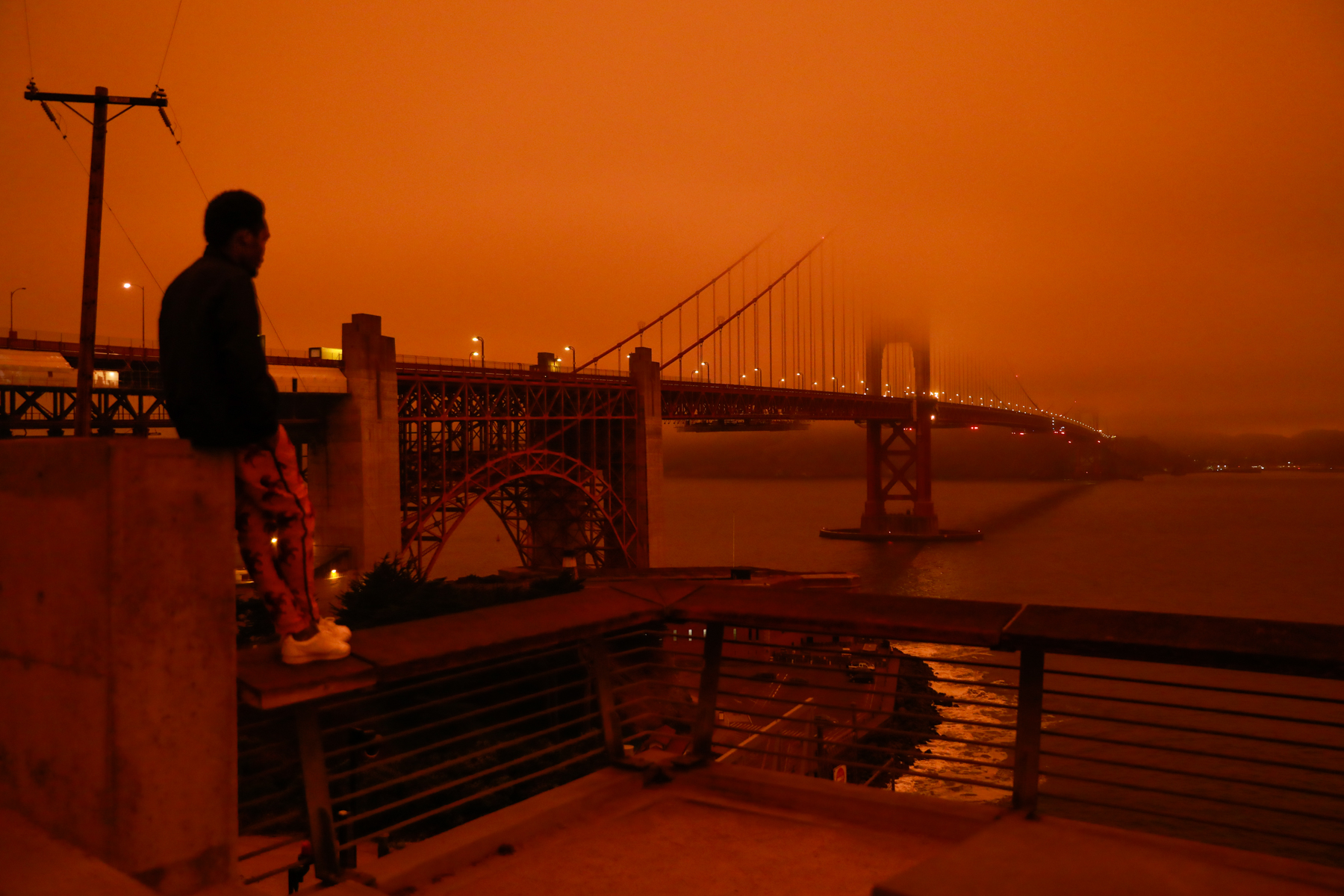
"A few weeks earlier, a barrage of dry lightning sparked hundreds of wildfires across the Bay Area. For 30 straight days, officials urged locals to stay inside because the air was so unhealthy. Tiny specks of soot and ash exceeded the safety guidelines set by the federal Environmental Protection Agency. It was even worse in the Sierra Nevada, the Sacramento Valley, and parts of Southern California."
"Wildfire smoke is now three to six times worse than it was a decade ago. Scientists have linked exposure to higher risks of heart disease, cognitive decline, and pregnancy complications. The evidence for these health effects is now stronger and more wide-ranging than many experts anticipated back in 2020. The most at risk, Gould said, are older adults. In 2020 alone, he estimated, wildfire smoke killed tens of thousands of people across the country, most of them seniors."
On Sept. 6, 2020, San Francisco reached 100 degrees after a barrage of dry lightning sparked hundreds of wildfires across the Bay Area. For 30 straight days, officials urged locals to stay inside because air quality was severely unhealthy and tiny specks of soot and ash exceeded federal EPA safety guidelines, with worse conditions in the Sierra Nevada, the Sacramento Valley, and parts of Southern California. Wildfire smoke is now three to six times worse than a decade ago. Scientists link smoke exposure to higher risks of heart disease, cognitive decline, pregnancy complications, rashes, stomach aches, and increased suicide rates. Older adults face the greatest risk, smoke can travel thousands of miles, and particles may weaken immune cells for weeks after exposure.
Read at Kqed
Unable to calculate read time
Collection
[
|
...
]